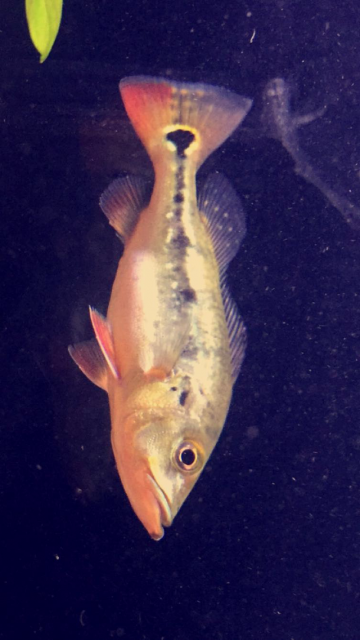don't use net for arowana, it is dangerous for those scales, try to use plastic bag adjusting its size, and for the other fish, use the steel-handled net for your own security. thanks
Netting out monster sized fish ?
- Thread starter redtailfool
- Start date
I also use a fishing net, the same net that I use to bring up large bass, catfish, gar, smaller saltwater rays, redfish, hybrid stripers, speckled trout. I've never moved a large fish more than 10 feet into another tank in my house. I start by draining most of the water, net the fish and rapidly move it into its new home. My large tanks share a common sump, no issues with acclimating. Although recently I moved a 2' redtail cat by 'noodling'i use a net i bought at dicks sg for fishing its not to big its a hand net it works great
this is for mid sized fish i assume. This would be a great ideas for loaches and knives i think.
Also works great for eels ... eels are very hard to catch by hand like trying to hold on to a oil down python
Has any ever used a pvc water bridge to remove the fish out of the tank ? Was an idea i had stop feeding for a few days and then put food into the container youll use to move them on.. only down side to this idea is having to wait for the fish to use it.. but would be a simple and less dangerous and stressful for the fish .don't use net for arowana, it is dangerous for those scales, try to use plastic bag adjusting its size, and for the other fish, use the steel-handled net for your own security. thanks
I've used a bucket lowered into a half filled tank for my Black Shark and Pictus cat because I didn't want their barbells getting stuck in the net. I just gently herded them into the bucket and lifted them out. For my Oscar I have a large fishing net with a steel handle but he barely fits in it.
Looks like a mono to me.Does anyone know if this a male or female and what type of peacock and when should he start getting color
View attachment 1198449
Here is a link about venting fish, should work for pbass.
When they color up, well I have no firsthand experience with pbass, so I am going off of research for this one. From what I've seen, they will show the first signs of color around 5-6" (yours appears to be around, what, 4-5"?) and by 10-12" they will have a real burst of colors.
As with most fish, the coloration in them depends on the diet they are given, the water quality, and tank size/environment type they are kept in - as well as genetics. If you keep a pbass on its own in a small, cramped tank with no substrate or structure, then you're going to have a pretty ugly bass - if you keep one in a large, well-decorated tank with dithers and potentially other pbass, that fish is probably going to look a lot nicer (IMO they will also look nicer in a natural tank because of the feel of the tank, I'd rather see a fish in a nicely planted tank with some wood/rocks than a bare bottom tank).
From a biological standpoint, genetics are the main deciding factor in the range of colors that your fish can show - when stress levels go down, color vibrancy will generally go up and vice versa. However, dietary factors can help bring out fish's most vibrant colors as well. Carotenoids influence the colors of fish the most - these are compounds produced by algae, certain fungi, and plants - and they usually help these organisms with photosynthesis. Few animals produce these compounds (no fish do that I know of), and so they get them from eating plants or eating other animals that have eaten the plants (or fungi or algae). A good example of this is flamingos - their feathers are not naturally pink. in the wild, they feed on shrimp, which feed on algae with carotenoids, which leads to these compounds being transferred over to the flamingo's feathers, making them pink. In zoos, there isn't an entire food chain like this, so carotenoids are added to the captive diet of flamingos to keep up their color. Astaxanthin is the carotenoid that is usually found in fish foods - it's produced by marine algae and bacteria, and it gets passed up the food chain to shrimp, crabs, lobsters, and salmon (they are the reason for the very red flesh of salmon, and the reason that when you cook a shrimp/crab/lobster, their shell turns red).
Feel free to do additional research on the topic, it becomes very interesting stuff. Also, why'd you post that on this thread






